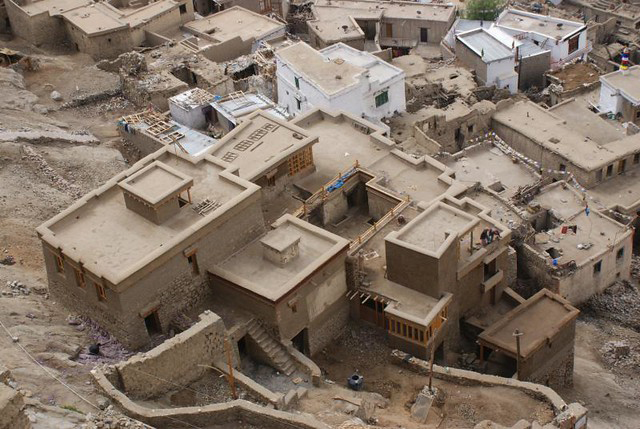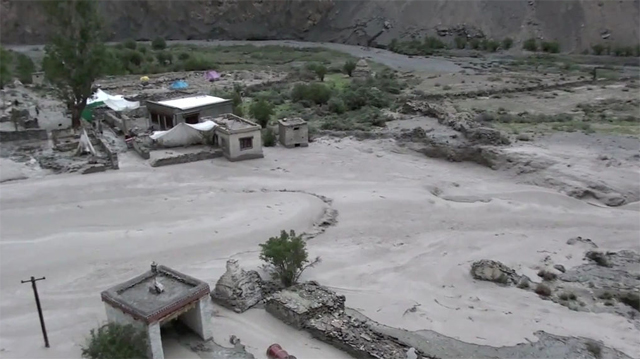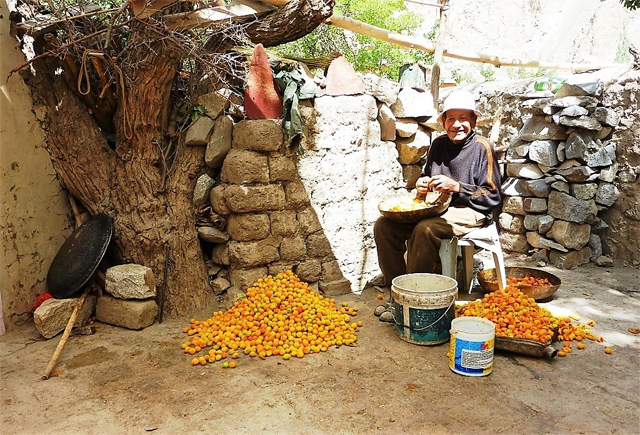A news report on The Weather Channel website last week summarized evidence showing that global climate change is starting to destroy the cultural heritage of Ladakh. Though not all Ladakhis agree with the causes of the destruction, historic structures are being weakened and destroyed by the changing weather conditions.

In order to cope with increasingly frequent downpours, the people have been modifying the architecture of their buildings. They are replacing the traditional wooden, stone, and clay roofs, built to withstand heavy snows, in favor of more expensive tin and concrete roofs to resist the severe rain storms which are becoming more common. The heavy rains are also harming the carvings and paintings in the Buddhist monasteries.
According to the news reporter, the American Institute for Conservation of Historic and Artistic Works investigated conservation issues related to the Ladakhi cultural heritage. It indicated that old buildings are being damaged both externally and internally by the seepage of water. The study reported that “the region is now experiencing short but heavy downpours that the traditional mud structures are not equipped to withstand.” The study also observed that melting glaciers in the higher mountains pose threats to old buildings.
Some local people attribute the changing climate to an initiative by the government in the 1990s to plant many trees in the region. Government agencies spent large sums of money on planting thousands of willows and fruit-bearing trees across Ladakh in an effort to increase the greenery of the arid desert. Some Ladakhis think that the afforestation program could be responsible for the unusual rainfall conditions, though the reporter points out that there are no scientific studies to support that popular belief.

The Weather Channel spoke with Rinchen Dorje, a 62-year-old teacher from Leh who modified his wooden home a few years after he retired because of the lesson he had learned from the flood that caused heavy damage in Leh in 2010. His home was partially destroyed at that time so a healthy fear of floods “is still fresh in our minds,” he said.
Iqbal Bijal, the president of a local NGO that focuses on helping the poor in Ladakh, said that the ways Ladakhis can store their foods have changed. They used to store foods such as cheeses during the winter months in their basements but with rainwater seeping in now, they have had to find other, more expensive ways of preserving them.

Farmers in Ladakh have also been affected by the changing climate but in different ways. Tsering Nobru, a farmer from Choglamsar, said that his apricot crops were now ripening much earlier in August than they used to. But there are two problems with the change: the trees are bearing fewer fruits and the apricots themselves taste differently now, apparently due to the reduced amount of time before they ripen.
While the unprecedented heavy rainstorms have affected Ladakh, so has the lack of adequate snowfall in the winter months. The absence of a decent snowpack has led, oddly enough, to a lack of sufficient water during the growing season. So farmers and the owners of tourist facilities who have to have reliable supplies of water have had to drill their own boreholes to gain access to the groundwater.